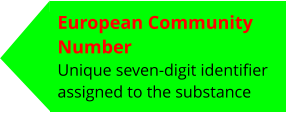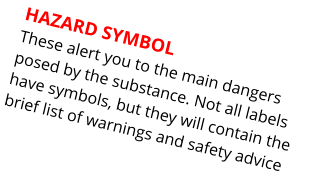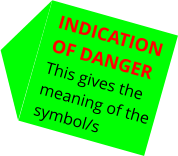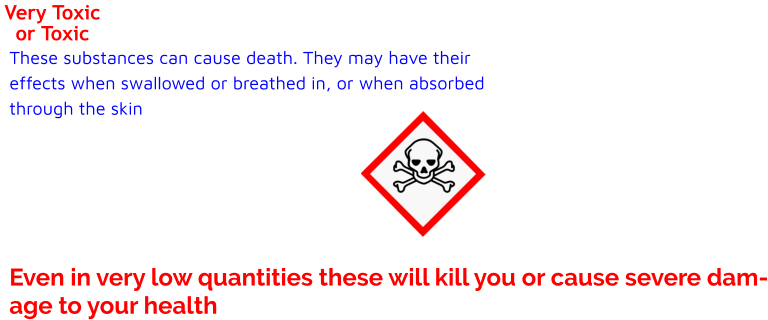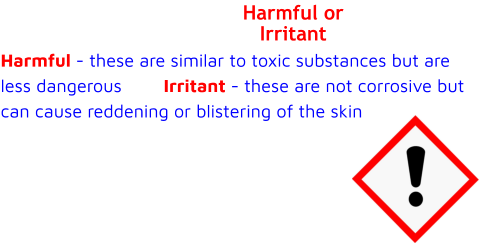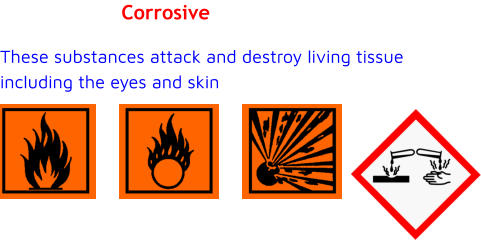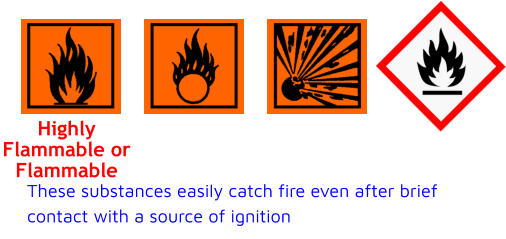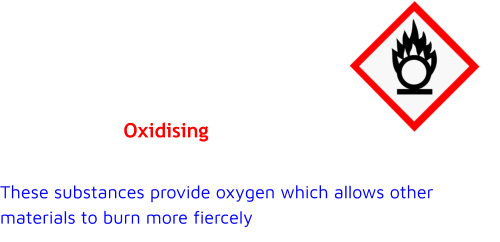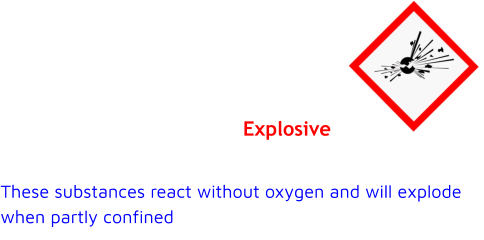



You will come into contact with a variety of substances each day -
many of them will be hazardous but some will present a higher risk
than others
A substance may be a solid, in granular or grain form, a paste or a slurry, a liquid, a gas or a vapour. Hazardous substances are marked with warning symbols (pictographs) that show the type of risk that they pose. The Control of Substances Hazardous to Health (COSHH) Regulations require a methodical examination of a task, or process, which involves using a potentially hazardous substance. Its purpose is to identify hazardous substances that may be used, whether the precautions that have been taken are acceptable ,and what control measures are in place. This is referred to as a COSHH Assessment.When dealing with hazardous substances, for your own safety and the safety of others
around, you should:
• only use substances that are correctly labelled; • always follow the manufacturers' instructions and the information on label and on the the COSHH Assessment; • always use the protective equipment that is identified on the label and on the COSHH Assessment; • never mix chemicals / substances; • when diluting chemicals, always place the chemicals into the water and NOT water into the chemical as this prevents neat chemicals being splashed. Where possible use a dispensing pump. • do not pour chemicals / substances into unmarked containers or spray bottles; • when carrying chemicals / substances, always use a sealed container to prevent it from spilling. Do not carry the container above waist height to avoid any possible spillage onto yourself. If the container is heavy, use a trolley to move it rather than trying to carry it; • store hazardous substances in a cool dry place, with good ventilation, and which will stop any leakage getting into the drains or the ground; • always separate alkaline and acid-based products and check them from time to time, to make sure that there is no leakage.Following the workplace precautions detailed in the COSHH Assessment will ensure your
safety and the safety of others working around you.
The use of chemicals in the workplace is covered by the Control of
Substances Hazardous to Heath Regulations (COSHH)
COSHH Assessments look at how you and where use the substance and provide you with details of the risks that you face from them. Whereas the manufactures data sheet only tells you about the substance.Try to substitute an alternative safer product for those that have a high
risk. Always use the lowest risk substances that will adequately perform
the task required.
COSHH Assessments provide you with details of the risks that you face from substances that you may use while carrying out your work. Always read the Assessment before you use a new substance and make sure that you understand how to use it safely. The assessments give detail the precautions that you must follow when using the substance; the emergency procedures to follow if there is a spillage or accident while it is being used, and the appropriate first aid treatment. Hazardous substances are marked with warning symbols that show the type of risk that they pose. Always read the COSHH Assessment before you use a new substance to make sure that you understand how to use it safely and provide the correct type of Personal Protective Equipment (PPE). Following the information in these documents will ensure your safety, the safety of others working around you and members of the public. Additionally, this guidance will help you to meet your legal obligations on health and safety at work and the environment. Everyone who may be in contact with a substance should receive instruction, information and training on how to use the substance and be issued with personal protective equipment to ensure that there is the lowest risk possible Hazard pictographs - pass your pointing device over the symbol to find out how harmful it may be All over the world there are different ways to identify the hazardous properties of chemicals. This can be confusing because the same chemical can have different hazard descriptions in different countries. The UN has therefore created the Globally Harmonized System of Classification and Labelling of Chemicals (GHS) - the new symbol will appear when you pass the mouse over the old symbol - the new symbols are now coming into use - watch out for them!Labels can help you identify the more hazardous chemicals; tell you
what the dangers are, and how to avoid them
Pass your pointing device over the label to see the key information
This example of a typical label gives basic information, which alerts you to the dangers and precautions; and gives details about the supplier so you can get further advice. This helps you to identify dangerous chemicals and undertake risk assessments under the Control of Substances Hazardous to Health Regulations (COSHH).A chemical is not just something used by scientists in laboratories -
most people use chemicals as part of their job or at home every day
Cleaning products such as bleach and oven sprays are chemicals. So are paints, inks, glues, and oils. Most of the chemicals you might use at work are not dangerous if you use them properly and know what to do if something goes wrong (such as spillage). But some chemicals need more careful handling than others. By law, suppliers of chemicals are required to label their products with hazard symbols, warnings and safety advice if a chemical is dangerous; managers in workplaces where chemicals are kept or used must ensure that the chemicals are used safely. Manufacturers may also include ‘instructions for use’ either on the label, or on a leaflet supplied with the product. Suppliers must provide safety data sheets for dangerous chemicals used in the workplace. This is a detailed information sheet provided by chemical suppliers to their customers so that workers and the environment can be properly protected.Remember that hazards and risks are not limited to substances labelled as ‘hazardous’.
Also, that many substances are hazardous to health when they are transferred from your
hands onto food, cigarettes, etc. and so taken into your body.
To avoid this, always follow good personal hygiene practices, for example:
• wash you hands before eating drinking and smoking and before using the toilet; • only eating, drinking and smoking away from the point of exposure. Read the Risk and COSHH Assessment/s that apply to your work and make sure that you understand how the work is to be done.Gas can come from a number of sources; however the risks of explo-
sion, poisoning, etc. are similar for all of them
The word 'gas' in this section relates to the use of gas within the workplace, as well as in the home. It is commonly used in the workplace for processing products, heating the work space and for hot water supplies, as well as cooking. Natural gas (mostly methane) is distributed to domestic, commercial and industrial consumers through an onshore network of buried pipes; whereas LPG is either supplied by a storage tank, or by small cylinders. Liquefied petroleum gas (LPG) is supplied in red (propane) and blue (butane), cylinders and can be extremely dangerous if it is not handled correctly. Butane does not function properly when the air temperature is at freezing point or below, as it has a boiling point of -2 degrees centigrade. LPG is heavier than air and any leakage will accumulate at low levels, for this reason, fuel gases and other flammable materials must be stored separately. Cylinders should preferably be stored outside in a locked cage, with prominent ‘No Smoking’ notices displayed. When methane, propane, LPG and other gases do not burn properly, or are used in an area without adequate ventilation, excess carbon monoxide (CO) is produced, which can kill within hours if inhaled. You can't see it, taste it or smell it, but CO can kill quickly without warning. For this reason, a carbon monoxide detector and alarm system must be installed anywhere gas is burned. Symptoms of carbon monoxide poisoning include tiredness, drowsiness, headaches, nausea and chest and stomach pains. To ensure their safe operation, gas appliances must be regularly checked and maintained, in line with the manufacturers' instructions. Gas engineers that are competent to install and maintain gas systems and appliances are members of the Gas Safe Register, and carry a registration card.Smell Gas? To report a gas or carbon monoxide emergency call the National Gas Emergency
Service - 24 hours a day - on 0800 111 999.
There is always a residual risk if you are exposed to a blood spillage
arising from an accident, or to other body fluids, or from exposure to
contaminated syringes
The risks from body fluids include Hepatitis B and HIV. For your own protection, you must not clean-up body fluids unless you have been properly trained to do so. If you have to clean-up body fluids, the following sensible precautions will help to protect you against infection. • Always wear a disposable apron and use disposable plastic gloves whenever blood, semen or other body fluids require cleaning-up. Use paper towels, disposable cloths or absorbent granules, such as cat litter, to absorb the spillage, and then place them in a plastic bag and dispose of them safely. • Disinfect the area in which any spills have occurred with a suitable disinfectant diluted with the correct amount of water (use 1 part of bleach to 10 parts of water if there is no proprietary disinfectant available). Be careful, as some disinfectants are corrosive and can be harmful to the skin, so check the label or the COSHH Assessment sheet before you use it. • If your skin come into direct contact with another person’s blood or other body fluids, wash the area with ordinary soap and water as quickly as possible. If the contamination involves the lips, mouth, tongue, eyes or broken skin, then rinse it with clean cold water and seek medical advice. Contaminated clothing may be cleaned in an ordinary washing machine using its hot cycle.All substances including chemicals, solvents and fuel should be stored
in a specially selected and locked areas
Store like substances together and away from other groups of substances that might cause a reaction if mixed; and store oxidizing and flammable substances in separate locations. This is to prevent the inadvertent mixing of incompatible chemicals, which can produce harmful gases and/or vapours, heat, fire and explosions. Do not store substances higher than eye level, and never on the top shelf of a storage unit; also avoid storing them on the floor (even temporary); and follow these basic precautions to control the potential risks: • store substances according to the manufacturer's instructions on the safety data sheet; • keeping the minimum quantity of hazardous substances necessary; • store incompatible substances separately; • take steps to prevent the release or leakage of dangerous substances; • keeping a spill kit near to the storage areas, and make sure people know what to do in the event of a spill; • clean up any leaks or spills that occur; • use appropriate precautions when handling substances - for example, wearing protective clothing or by ensuring adequate ventilation; • check that containers used for short-term storage are properly labelled.Allocate safe storage areas for the storage of flammable materials and gases; and make
sure that warning signs are displayed, so that everyone is aware of the risk that they pose.
Keep:
• flammable materials like petrol, solvents and adhesives in lockable steel containers; and • flammable gases, upright on their base and stored outside buildings; in well- ventilated and secure areas, such as wire mesh cages. Any tank used for the bulk storage of fuel must have a bund around it, which will hold the contents of the tank plus 10%, so that any leakage from it is contained.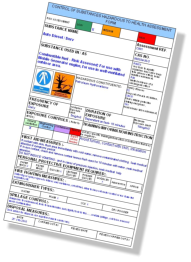





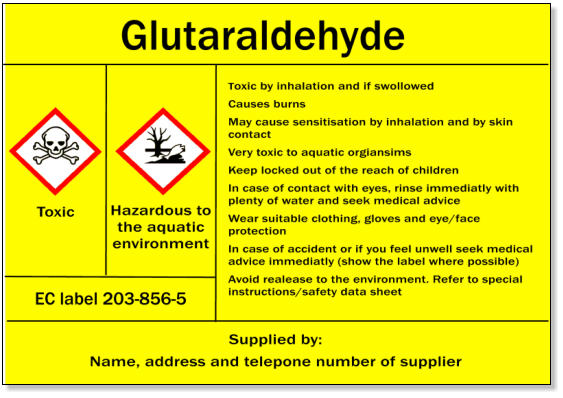
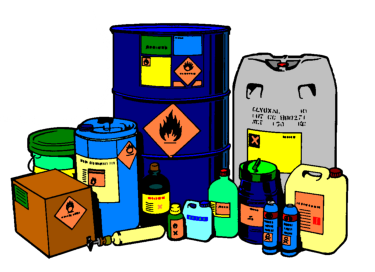












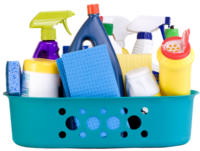
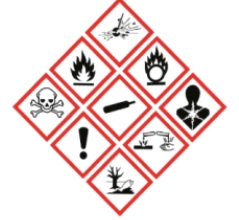









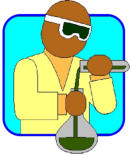
Safe use of
substances


